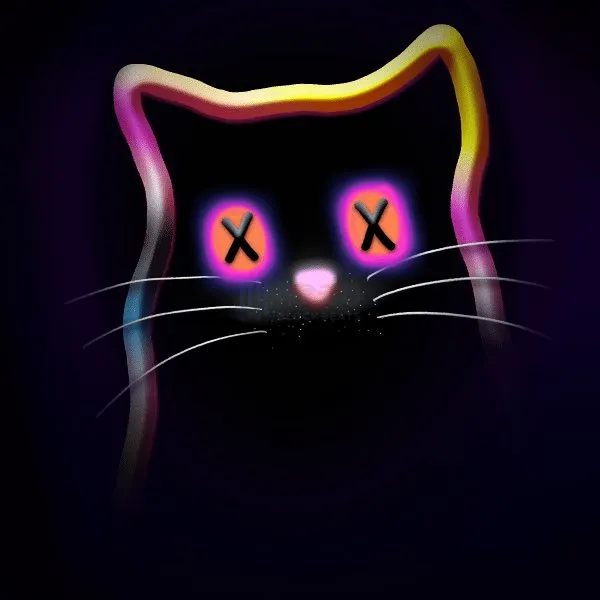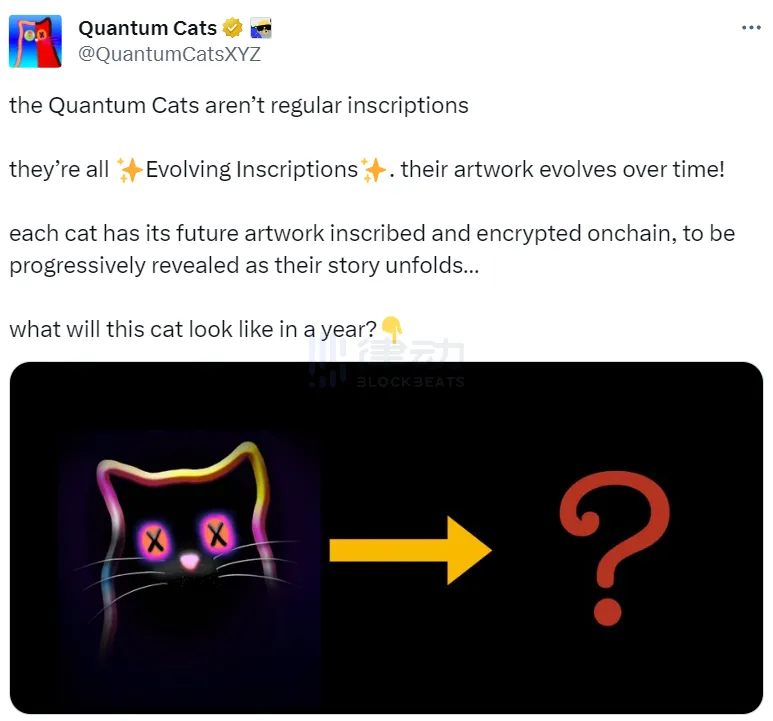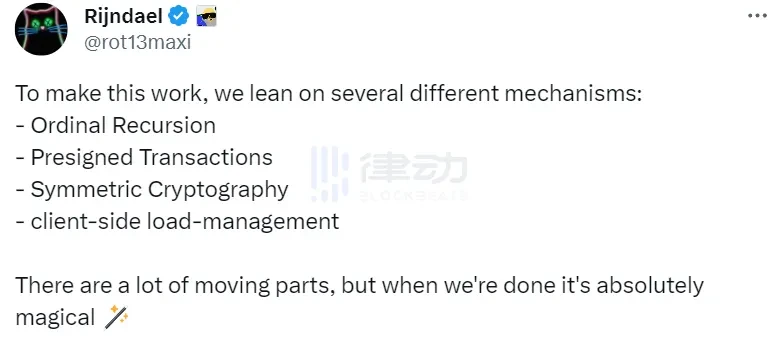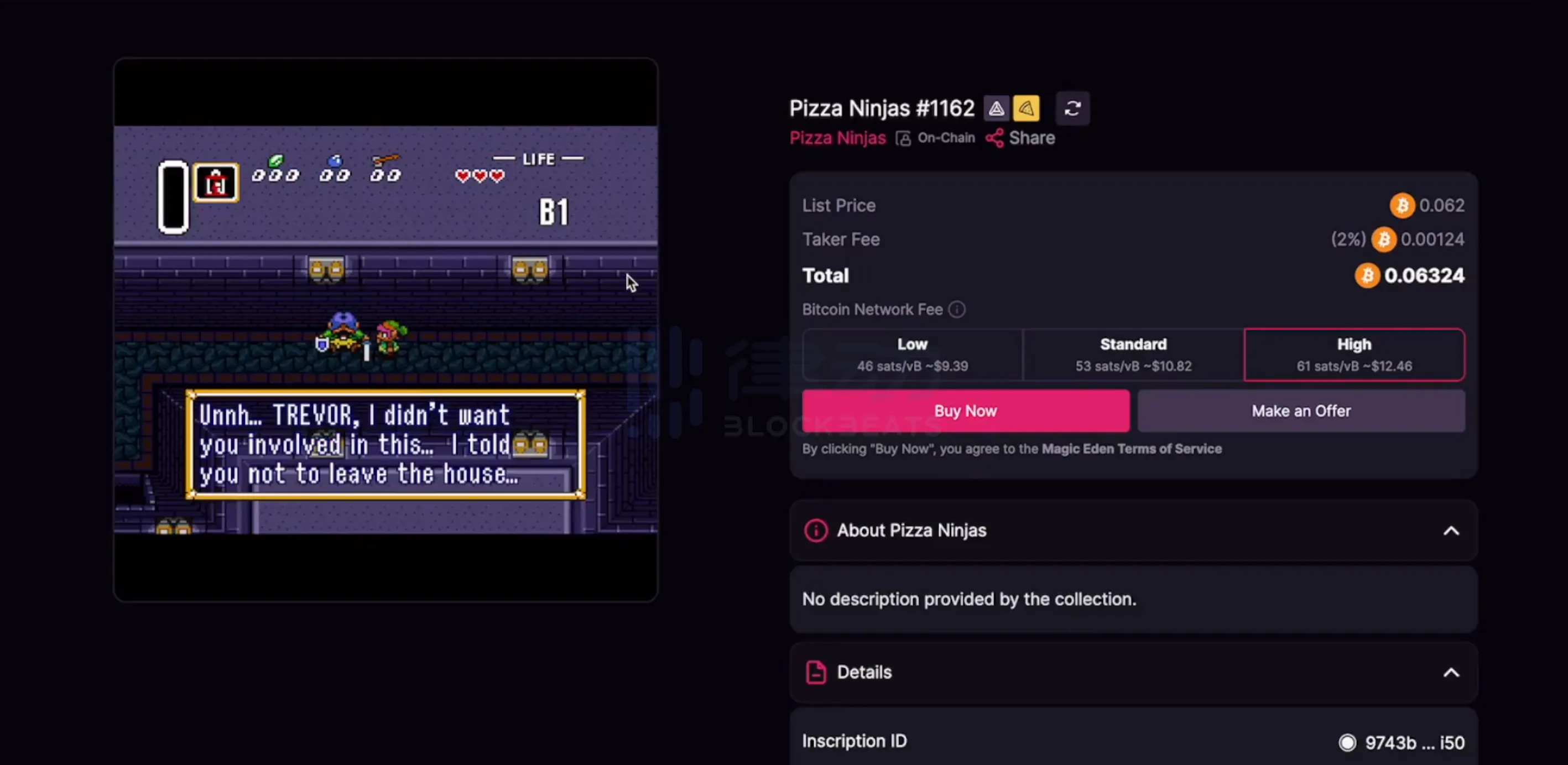The most anticipated Bitcoin NFT project recently is undoubtedly the Quantum Cats series to be released by the Taproot Wizards team.

Quantum Cats
Setting aside the strong influence of "Taproot Wizards" in the Bitcoin NFT ecosystem and the impact on players to have a better chance of obtaining "Taproot Wizards" whitelist by holding "Quantum Cats," "Quantum Cats" is a very interesting project. "Quantum Cats" describes itself as using "evolutionary inscriptions" - each "Quantum Cat" will continue to change in a deterministic way over time and as the storyline develops.

What will "Quantum Cats" look like in a year?
We know that the Bitcoin mainnet does not have smart contracts, and once the inscription content is engraved, it is fixed. How does "Quantum Cats" make the inscription image change continuously? BlockBeats will explore this interesting question with you. After exploring this question, we will also find that Bitcoin NFTs have entered a new era.
Changes in "Quantum Cats" - Recursion + Presigned Transactions
CTO of Taproot Wizards, @rot13maxi, mentioned in a tweet that to achieve the dynamic changes of "Quantum Cats," they used the following technologies:
- Recursive inscriptions
- Presigned transactions
- Symmetric encryption
- Client-side load management

I'm sure everyone is familiar with recursive inscriptions. In short, recursive inscriptions allow inscriptions to refer to each other and retrieve content. Recursive inscriptions contain JavaScript code. When a browser views an inscription containing JavaScript code, the browser executes the code in a sandbox, ultimately displaying the content obtained from running the code.
It is easy to understand how the image changes by referencing other inscriptions in the chain, but if the content referenced by other inscriptions has already been on the chain, the referenced content is transparent, and there are no surprises. What to do? This is where presigned transactions come in - if the referenced content is an inscription that has not yet been on the chain, the displayed result will naturally be "404 Not Found." Presign the transaction that implements the "open image" action, but do not broadcast it. When the presigned transaction is broadcasted one day, the referenced content will appear, and the "Quantum Cats" image will change.
Symmetric encryption is used to ensure that there is no data leakage before users see the updated image, preventing a significant discount in surprises. It is worth mentioning that "Quantum Cats" actually has two layers of insurance. The first layer of insurance adds an additional layer of mapping, such as background, body, nose, and other features being assigned as "layers." Each "Quantum Cat" will point to a JSON file, and its ID will be mapped to a new short ID, which will then be mapped to the inscription ID of the feature. This JSON file is called the "layer connector." Before the "layer connector" is on the chain, holders can only see the "layer connector" they reference, but they do not know what features will be assigned after execution.
The first layer of insurance is to prevent the trouble caused by directly referencing inscriptions. Even if it is possible to delay the on-chain of directly referenced inscriptions to keep them confidential, the rarity of "Quantum Cats" features can still be calculated based on the number of references.
The second layer of insurance is symmetric encryption, to prevent sudden increases in miner fees after the "open image" transaction is on the chain. If the transaction cannot be completed immediately, the code of the JSON file will be leaked before "open image." What to do? Each "layer" is symmetrically encrypted.
As for client-side load management, it is not directly related to achieving the dynamic changes of "Quantum Cats," but it is to provide a good experience for users when browsing a bunch of "Quantum Cats," preventing network timeouts and browser thread pool exhaustion.
In addition to the approach of "Quantum Cats," there is also the recursion + Sat Endpoint method used by Pizza Ninjas.
Changes in Pizza Ninjas - Recursion + Sat Endpoint
Sat Endpoint actually greatly enhances the functionality of recursive inscriptions. By using the Sat Endpoint feature, re-engraving can be performed on a single sat, and different versions of inscriptions on a single sat can be displayed. If the technical innovation of "Quantum Cats" is more for its artistic narrative (paying tribute to OP_CAT) and artistic behavior (progressive image opening), then Pizza Ninjas using Sat Endpoint is more about creating breakthroughs in functionality.
Moreover, Sat Endpoint actually has a "trust" advantage compared to smart contracts.
Although inscriptions are immutable, Sat Endpoint can use re-engraving to allow inscriptions to be upgraded in a way permitted by the holder. The change rights of smart contracts are in the hands of the project party/developer, but in Bitcoin, the situation is completely different - it can be understood as a software releasing multiple versions, and users can choose to stay in their preferred/more stable old version or upgrade to the latest version, because NFT holders have the power of re-engraving. Furthermore, NFTs using different versions of "smart contracts" (actually a .js file) will remain intact within the same series, unlike Ethereum, where a series of NFTs may split due to contract changes.

The diagram of Pizza Ninjas illustrates this well - developers release different versions of .js files, and holders can choose (engrave) which one.
Of course, what's even more impressive is that Sat Endpoint actually turns simple artworks into a token-gated programmable small computer, allowing CRUD (create, read, update, delete) of applications through re-engraving, and various inscription browsers can directly run the code on the inscription. We saw someone re-engrave the classic game "DOOM" early on in Ordinals. With Sat Endpoint, even more creativity and imagination can be unleashed on a single inscription. Taking Pizza Ninjas as an example, the team designed custom JavaScript code to provide holders with a simulator of the classic Nintendo SFC game console, allowing holders to re-engrave SFC game ROMs into it, turning their Pizza Ninja into a game console running on Bitcoin.

As various experts continue to explore the Bitcoin ecosystem, there will be more geeky explorations like NFT game consoles. Pizza Ninjas has proposed a concept called "Art as Application (AssA)."
Conclusion: The Era of Bitcoin NFT Has Changed
The numerous new features brought about by the Ordinals protocol update and the influx of funds have raised the "entrepreneurship" threshold for Bitcoin NFTs. It can be said that the era of "grassroots entrepreneurship" where one had to download and narrate the image on the website for fair and free has passed. The most immediate feeling for everyone may be that the quality of the images is getting higher, but upon closer examination, it actually has split into two main development directions.
Narrative Scarcity
The existence of inscription numbers makes the competition in the "narrative" of Bitcoin exceptionally fierce. For example, the emergence of Nodemonkes has encroached on the "first native 10K PFP" narrative originally belonging to Bitcoin Frogs. Rare sats, ancient sats, and others have almost become standard configurations for creating a top NFT project on Bitcoin.
Technological Innovation
From the most famous "Quantum Cats" and Pizza Ninjas, to the second-tier influential projects like Shadow Hats and Fomojis, one of the main reasons these projects have sparked widespread discussion in the English-speaking community is that they use recursive inscriptions as a base to bring new talking points/artistic charm and interactive fun to users through technological innovation. Although inscriptions still look like images, they actually engrave code, and what people see is the result of code execution or rendering. This is something that technical teams unfamiliar with Bitcoin cannot achieve.
Of course, ultimately, the issue also comes down to resources. "Quantum Cats" alone spent $66,000 to engrave its 3333 cats. Even grassroots entrepreneurs, even if they have the technical ability, would find it difficult to come up with such a large sum of money to put the inscriptions on the chain.
Even so, the development of the Bitcoin NFT ecosystem is still in its early stages. The aesthetic of the development direction of "technological innovation" is actually quite "niche" - like generative art, it requires us to explore the stories behind it in detail to appreciate its deeper charm. However, it is difficult to tell a story with direct and beautiful words, as it is all about code, code, code, which limits its appeal to non-computer enthusiasts. I believe that providing new gameplay that is easy for users to perceive, like Pizza Ninjas, is the right solution. "Quantum Cats" relies more on the high expectations of "Taproot Wizards" for support.
Outside of these two tracks, the construction of community and culture is still a viable track on Bitcoin, as seen with Bitcoin Puppets being compared to Milady by some players.
The rapid development of Bitcoin NFTs has brought about changes in the era of Bitcoin NFTs. As an ordinary player, although the increasing prices of new Bitcoin NFT projects make it difficult for me to keep up, I am still excited about the continuous emergence of new and exciting things.
免责声明:本文章仅代表作者个人观点,不代表本平台的立场和观点。本文章仅供信息分享,不构成对任何人的任何投资建议。用户与作者之间的任何争议,与本平台无关。如网页中刊载的文章或图片涉及侵权,请提供相关的权利证明和身份证明发送邮件到support@aicoin.com,本平台相关工作人员将会进行核查。




